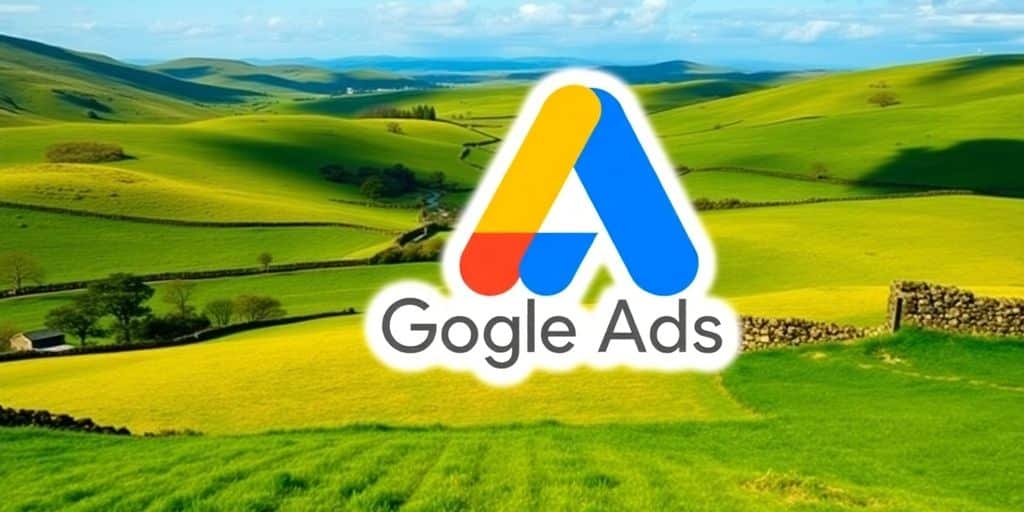If you’re running a business in Ireland, getting the hang of Google Ads can be a game-changer. It’s not just about throwing money at online ads; it’s about smart strategies that make your investment worthwhile. From honing in on the right keywords to making sure your ads pop, there’s a lot to consider. And let’s not forget about keeping an eye on your budget and tracking those all-important conversions. Whether you’re new to Google Ads or looking to up your game, these top strategies can set you on the right path. Investing in professional Google Ads services in Ireland can also provide you with valuable insights and data that help refine your approach. Collaborating with experts can ensure that your campaigns are tailored to your target audience, maximizing your return on investment. With the right support, your business can leverage the full potential of digital advertising to drive growth and increase brand visibility. Additionally, exploring specific Google Ads strategies for niche markets can help you reach audiences that are often overlooked by broader campaigns. By tailoring your messaging and targeting to the unique interests and needs of these segments, your ads can resonate more deeply and achieve better engagement rates. This focused approach can not only enhance your brand’s presence but also drive qualified leads that convert at a higher rate. Additionally, small businesses can benefit immensely from understanding how small businesses can use Google Ads effectively. By implementing localized targeting and utilizing ad extensions, they can make their ads more relevant to their immediate customer base. This level of personalization not only boosts visibility but also fosters a stronger connection with potential customers in the community.
Key Takeaways
- Focus on the right keywords to reach your target audience effectively.
- Craft ad copy that grabs attention and encourages clicks.
- Keep a close watch on your budget to ensure you’re getting the best ROI.
- Optimise for local searches to attract customers in your area.
- Use Google My Business to enhance your online presence.
1. Targeting Specific Keywords
When it comes to Google Ads strategies, targeting specific keywords is a cornerstone for any successful campaign. Choosing the right keywords can make or break your advertising efforts. Here’s how you can effectively target keywords to boost your business in Ireland.
- Branded vs Non-Branded Keywords: Understand the difference between branded and non-branded keywords. Branded keywords include your business name or products, like "Apple iPhone," while non-branded keywords might be "smartphones for sale." Use branded keywords to protect your brand from competitors and to guide users to specific landing pages.
- Broad Match Keywords: Consider using broad match keywords to cast a wider net. This type of keyword match allows your ads to appear for searches related to the keyword’s meaning, not just the exact term. For example, a broad match for "organic coffee" might show ads for "eco-friendly coffee shops."
- Negative Keywords: Employ negative keywords to philtre out irrelevant traffic. These are terms you don’t want your ads to appear for, which helps in refining your audience and improving your click-through rate.
Focusing on the right keywords ensures that your ads are seen by people who are most likely to engage with your business. It’s about connecting with your audience in a meaningful way, without wasting resources on uninterested viewers.
- Keyword Research Tools: Use tools like Google’s Keyword Planner to identify high-performing keywords. This tool provides insights into search volumes and competition, helping you make informed decisions on which keywords to target.
- Local Keywords: Don’t forget to include local keywords if your business serves specific areas. Terms like "Dublin bakery" or "Galway plumbing services" can help attract local customers searching for your services.
By honing in on specific keywords, you can ensure your Google Ads reach the right audience, drive more traffic, and ultimately increase conversions.
2. Compelling Ad Copy

Creating ad copy that grabs attention and engages potential customers is essential for any successful Google Ads campaign. Your ad copy is often the first impression potential customers have of your business. It needs to be clear, engaging, and tailored to your target audience.
- Focus on Benefits, Not Features: Instead of simply listing features, tell users how your product or service will solve their problems or improve their lives.
- Use Strong Calls to Action (CTAs): Encourage users to take the next step, whether it’s "Buy Now," "Learn More," or "Get a Quote."
- Incorporate Keywords: Ensure your ad copy includes relevant keywords that align with user searches. This not only improves ad relevance but also enhances your Quality Score.
Remember, a compelling ad copy is about connecting with your audience on a personal level. It’s not just about selling a product; it’s about offering a solution or fulfilling a need.
Tips for Crafting Effective Ad Copy
- Understand Your Audience: Know who you’re writing for and what they care about.
- Keep It Concise: With limited space, every word counts. Be direct and to the point.
- Test Different Variations: Experiment with different headlines and CTAs to see what resonates best with your audience.
By focusing on these strategies, you can create ad copy that not only attracts clicks but also converts those clicks into customers.
3. Budget Management
Managing your Google Ads budget effectively is like balancing a tightrope. If you overspend, you might not see the returns you expect, but underspending could mean missed opportunities. Finding that sweet spot is crucial for any business.
Start by setting a realistic budget that aligns with your business goals. Begin with a modest amount, and as you gather data, adjust accordingly. This approach helps you avoid wasting money on underperforming ads.
Key Steps for Effective Budget Management
- Set Clear Goals: Determine what you want to achieve with your Google Ads. Whether it’s increasing brand awareness or driving sales, your budget should reflect these goals.
- Monitor Performance: Use tools like Google Analytics to track how well your ads are doing. This will help you decide where to allocate more funds or where to cut back.
- Adjust Regularly: Don’t set your budget and forget it. Regularly review your campaign performance and adjust your spending based on what’s working and what’s not.
Budget Allocation Tips
- Prioritise High-Performing Keywords: Allocate more budget to keywords that are driving conversions. This ensures your money is spent where it’s most effective.
- Use Bid Adjustments: Modify your bids based on device, location, or time of day to optimise your spending.
- Consider Seasonal Trends: Adjust your budget during peak seasons or holidays when consumer spending might be higher.
Remember, effective budget management is not just about spending less, but spending smarter. Keep an eye on your return on investment and make informed decisions.
For more on Google Ads strategies tailored for Irish businesses, explore how localising keywords and adapting to seasonal trends can enhance your campaign performance.
4. Local SEO Optimization
Local SEO is a big deal for Irish businesses. Why? Because more and more folks are searching for local services online. If you want your business to pop up in those searches, you gotta get your local SEO right. Here’s how you can do it effectively:
- Geo-Targeting: Use geo-targeting to focus your ads on specific areas. This way, your ads show up for people who are actually nearby and more likely to become customers.
- Location Extensions: Add location extensions to your Google Ads. This feature shows your business address, making it easy for customers to find you.
- Localised Ad Content: Craft ad content that speaks to your local audience. Mention local landmarks or events to grab attention.
- Google My Business: Make sure your Google My Business profile is up-to-date. This builds trust and attracts local customers. Encourage reviews and respond to them to show you care about customer feedback.
- Local Keywords: Use local keywords in your ad copy to improve visibility. Research what locals are searching for and incorporate those terms.
- Schema Markup: Implement local schema markup on your website. This helps search engines understand your content better, improving your chances of appearing in local search results.
- Customer Reviews: Encourage your customers to leave reviews. Positive reviews boost your local SEO and attract more customers.
- Collaborate with Local Influencers: Partner with local influencers to reach a wider audience. This can increase your brand’s visibility and appeal.
Engaging with your community and tailoring your advertising to local tastes can significantly boost your business’s success in a competitive market. Keep your focus local, and you’ll see the benefits in foot traffic and sales.
By focusing on these strategies, Irish businesses can not only enhance their visibility in Google Ads campaigns but also thrive in a competitive market. Remember, local SEO isn’t just about being found; it’s about being chosen. Leveraging the latest Google Ads features can further optimize campaigns, allowing businesses to reach their target audience more effectively. By staying informed about these advancements, companies can tailor their advertising strategies to align with shifting consumer behaviors. Ultimately, this proactive approach will not only increase engagement but also drive higher conversion rates.
5. Google My Business Utilization
For Irish businesses, Google My Business (GMB) is like having a digital storefront that never closes. It’s a free tool that lets you manage how your business appears on Google Search and Maps, which is super handy for boosting your local visibility.
Setting Up Your GMB Listing
Getting started with GMB is straightforward:
- Head to the Google My Business website and click on "Start Now."
- Sign in with your Google account or create a new one if needed.
- Enter your business name, address, and choose the right category.
- Add your phone number and website URL.
- Verify your business through phone, email, or postcard.
- Once verified, fill in more details like your hours, photos, and a description of your services.
Keeping Your Listing Updated
Keeping your GMB listing fresh is crucial. Regularly update your information, add new photos, and respond to customer reviews. This not only improves your online presence but also helps in building trust with potential customers.
Engaging with Customers
Interacting with customers through GMB can make a big difference:
- Encourage satisfied customers to leave positive reviews.
- Reply to reviews promptly, whether they’re glowing or not-so-great.
- Use GMB posts to highlight special promotions or events.
"Your GMB listing is a dynamic space where you can engage directly with your audience and showcase what makes your business unique."
Maximising Visibility
To really make the most of GMB, consider these tips:
- Ensure your listing is complete and accurate.
- Use high-quality images to attract more attention.
- Regularly post updates about your business or special offers.
Using Google My Business effectively can significantly impact your business’s visibility and customer engagement in Ireland.
6. Quality Score Improvement

Improving your Quality Score in Google Ads can make a big difference in your ad performance and costs. Quality Score is Google’s way of rating the quality and relevance of your keywords and PPC ads. It influences your ad rank and the cost per click (CPC) you pay.
Understand the Components
Quality Score is based on three main factors:
- Expected Click-Through Rate (CTR): This predicts how likely it is that your ad will get clicked when shown for a keyword.
- Ad Relevance: Ensures your ad copy is closely related to the keywords you are targeting.
- Landing Page Experience: Focuses on how useful and relevant your landing page is to users.
Tips to Improve Quality Score
- Refine Your Keywords: Use specific and relevant keywords. Avoid broad terms that might not target your audience effectively.
- Enhance Ad Copy: Make sure your ad copy is engaging and relevant to the keywords. This can boost your ad relevance.
- Optimise Landing Pages: Ensure your landing pages are fast, mobile-friendly, and provide the information promised in the ad.
Monitor and Adjust
Regularly check your Quality Score and make adjustments as needed. Use tools like Google’s Insights page to understand how your ads are performing and where improvements can be made.
A high Quality Score can lower your costs per click and improve your ad positions, making your campaigns more effective and budget-friendly. Keep an eye on your metrics and adapt your strategies to maintain a good score.
7. Conversion Rate Tracking

Understanding how well your Google Ads are performing is vital for any business, and conversion rate tracking is a key part of that. Conversion rate measures the percentage of users who take the desired action after clicking on your ad. This could be anything from making a purchase to signing up for a newsletter.
Why Track Conversion Rates?
- Measure Success: Tracking conversion rates helps you understand which ads are effective and which ones need tweaking.
- Budget Efficiency: Knowing your conversion rates allows you to allocate your budget more effectively, ensuring you’re spending money on ads that actually convert.
- Improve ROI: By focusing on ads with higher conversion rates, you can improve your return on investment.
How to Track Conversion Rates
- Set Up Conversion Tracking: Use Google Ads’ built-in conversion tracking tools to monitor how many clicks lead to conversions. This is essential for measuring your click conversion rate.
- Analyse Data Regularly: Regularly check your conversion data to spot trends and make informed decisions.
- Adjust Strategies: Use the insights gained from conversion tracking to adjust your ad strategies for better performance.
Conversion tracking isn’t just about numbers; it’s about understanding your customers’ journey. By paying close attention to how users interact with your ads, you can refine your approach and better meet their needs.
Common Mistakes to Avoid
- Ignoring Mobile Users: Ensure your conversion tracking is set up for both desktop and mobile users.
- Overlooking Landing Pages: A high click-through rate means nothing if your landing page isn’t converting.
- Forgetting to Test: Always test different versions of your ads to see which performs best.
In conclusion, conversion rate tracking is an indispensable tool for any business looking to optimise their Google Ads strategy. By focusing on the metrics that matter, you can drive more effective campaigns and ultimately, grow your business.
8. Remarketing Strategies
Understanding Remarketing
Remarketing is all about reconnecting with folks who’ve visited your site before. It’s like giving them a nudge to come back and check out what they might’ve missed. This strategy is super handy for turning casual browsers into loyal customers.
Setting Up a Remarketing Campaign
To get started, you need to set up a remarketing campaign on platforms like Google Ads or Facebook. Here’s a quick rundown:
- Create a Remarketing List: Identify which visitors you want to target—maybe those who added items to their cart but didn’t buy.
- Design Tailored Ads: Make sure your ads speak directly to the interests of those on your list. Personalisation is key here.
- Set Frequency Caps: Avoid bombarding users with the same ad repeatedly. Too many ads can be a turn-off.
Segmenting Your Audience
Not all visitors are the same, so segmenting your audience can really boost your remarketing efforts. Consider these segments:
- Recent Visitors: People who’ve visited in the last week might need a gentle reminder.
- Cart Abandoners: A special offer might just bring them back to complete their purchase.
- Past Purchasers: Encourage them to return with a loyalty discount or a sneak peek at new products.
Benefits of Remarketing
Remarketing keeps your brand fresh in the minds of potential customers. It’s often cheaper than other ad types and can significantly increase conversion rates. By targeting those already familiar with your brand, you’re more likely to see a return on your investment.
Remarketing isn’t just about chasing the sale; it’s about building a relationship with your audience. When done right, it can turn a one-time visitor into a lifelong customer.
For Irish marketers, using local insights and regional preferences can make your remarketing campaigns even more effective. Incorporating seasonal trends and dynamic remarketing techniques can keep potential customers engaged and boost overall ad performance.
9. A/B Testing for Ads
A/B testing, also known as split testing, is a powerful tool for refining your Google Ads strategy. By comparing two different versions of an ad, you can determine which one performs better and optimise your campaigns accordingly. This process is essential for making data-driven decisions that can significantly improve your advertising results.
Steps to Conduct A/B Testing:
- Identify the Element to Test: Whether it’s the headline, call-to-action, or image, choose one element to test at a time to ensure clear results.
- Create Variations: Develop two versions of the ad, changing only the element you wish to test.
- Run the Test Simultaneously: Ensure both versions are live at the same time to avoid skewed results due to seasonal or time-based factors.
- Analyse the Results: Look at key metrics like click-through rate (CTR), conversion rate, and cost-per-click (CPC) to determine the winning ad.
- Implement the Winning Version: Once you identify which ad performs better, implement it across your campaign.
A/B testing isn’t just about finding what works best; it’s about understanding your audience’s preferences. Each test provides insights that can guide future marketing strategies, making your ads more effective over time.
By consistently applying A/B testing, Irish businesses can ensure their Google Ads are not only reaching the right audience but also engaging them in the most effective way possible.
10. Video Marketing Integration
Incorporating video into your marketing strategy is a game-changer, especially for businesses in Ireland looking to make a big impact. Videos are everywhere, and they’re not just for entertainment anymore. They’re a powerful tool for advertising, and here’s why.
Why Videos Matter
Videos catch attention quickly. Whether it’s a short clip on social media or a detailed tutorial on YouTube, videos can convey your message faster and more effectively than text or images alone. For Irish businesses, this means a greater chance of engaging potential customers.
Types of Video Ads
- In-Stream Ads: These are the ads you see before, during, or after a video on platforms like YouTube. They can be skippable or non-skippable, giving you flexibility in how you reach your audience.
- Bumper Ads: At just six seconds long, these ads are perfect for quick, memorable messages. They’re less disruptive and work well for retargeting past customers.
- In-Feed Video Ads: These appear alongside related content, making them great for targeting specific interests or demographics.
Steps to Effective Video Marketing
- Define Your Goals: Are you looking to boost brand awareness, drive sales, or engage your community? Knowing your goals will guide your video content.
- Understand Your Audience: Tailor your videos to what your audience wants to see. This might involve some research into their preferences.
- Create Quality Content: Invest in good production. While it doesn’t have to be Hollywood-level, clear audio and visuals are a must.
- Measure and Adjust: Use analytics to see how your videos are performing. Don’t be afraid to tweak your strategy based on what’s working.
Videos don’t just tell your story; they show it. This visual storytelling can be a powerful way to connect with your audience, making your brand memorable.
By integrating video marketing into your strategy, you can enhance your digital presence and reach a wider audience. Whether you’re a small local business or looking to expand nationally, video content offers a versatile and effective way to engage potential customers.
Video marketing is a powerful tool that can help your business stand out. By integrating engaging videos into your marketing strategy, you can capture your audience’s attention and boost your brand’s visibility. Don’t miss out on the opportunity to elevate your marketing game! Visit our website to learn more about how we can assist you in harnessing the power of video marketing.
Wrapping It Up
So there you have it, folks. Navigating the world of Google Ads can seem a bit daunting at first, but with these strategies, you’re well on your way to making a real impact. Remember, it’s all about understanding your audience and tweaking your approach as you go. Whether you’re a small café in Cork or a tech startup in Dublin, these tips can help you reach the right people and grow your business. Keep experimenting, keep learning, and most importantly, keep your goals in sight. Who knows, maybe your next campaign will be the one that takes your business to the next level. Cheers to your success!
Frequently Asked Questions
How can I make sure my Google Ads reach the right people?
To ensure your Google Ads reach the right audience, focus on targeting specific keywords that relate to your business. You can also target users based on their location, interests, and hobbies to connect with potential customers who are already interested in your industry.
What makes an effective ad copy?
An effective ad copy should highlight your unique selling points, such as special offers or new product launches. Use engaging images and clear language to grab attention and encourage clicks.
How should I manage my Google Ads budget?
Start with a small budget and monitor the performance of your campaigns. Tools like Google Analytics can help you track your return on investment (ROI) and make necessary adjustments to improve results over time.
Why is local SEO important for Irish businesses?
Local SEO helps Irish businesses increase their online visibility and attract local customers. By optimising your Google My Business listing and encouraging customer reviews, you can improve your local search rankings.
How can I improve my Google Ads Quality Score?
Improve your Quality Score by ensuring your ads, keywords, and landing pages are relevant and high-quality. This can help lower your cost-per-click and improve your ad ranking.
What is the benefit of using video in Google Ads?
Integrating video into your Google Ads can make them more engaging and help you reach a wider audience. Videos can showcase your products or services in action, making them more appealing to potential customers.













